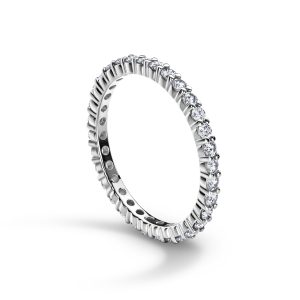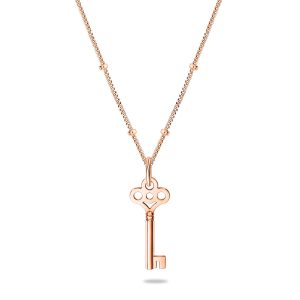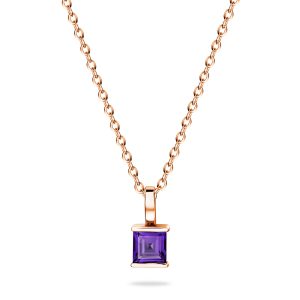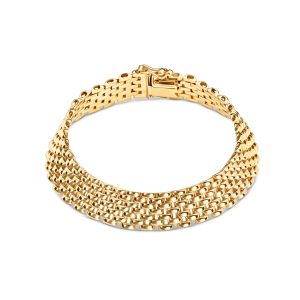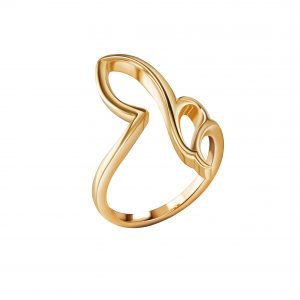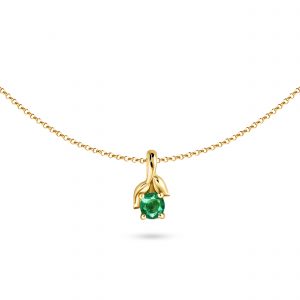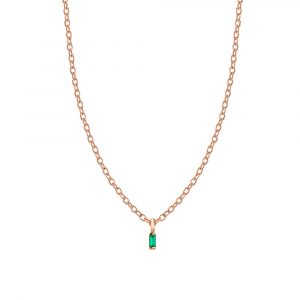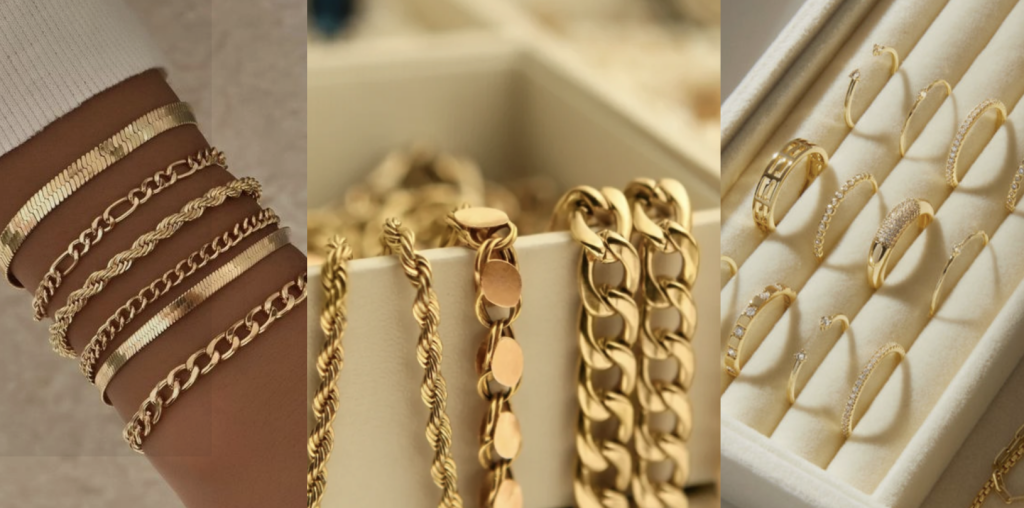
HOW TO IDENTIFY GOLD KARAT?
Did you know that the U.S. doesn’t have an official jewelry hallmarking system?
In other words, there aren’t any regulations. People think they may be purchasing high-quality gold jewelry but in fact, there is a high percentage that it’s purity is questionable. Most European countries have a regulated system that requires independent testing of metal fineness and that documents their maker’s marks with an official stamp – a government stamp or an independent lab stamp – indicating the results of such testing. Similar to a diamond certification.
Here you’ll find all you need to know to make smart jewelry investments, avoid scammers and make proper decisions at the moment of purchase by learning how to quickly identify gold karat.
KARAT RATING MEASURES
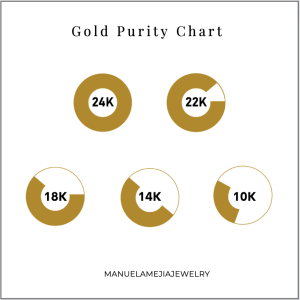
How is the karat rating measured and which one is the best?
You have probably heard of the most widely used purity measure for gold, which is karat. When someone refers to a piece of gold jewelry, they indicate its karat rating to show its purity. In its pure form, gold is a very soft metal. It’s too delicate for everyday wear, so it’s often alloyed (mixed) with other metals such as silver, copper, nickel, and zinc to improve its strength and resilience.
The most popular mixtures of gold are 14K, 18K, 22K, and 24K which are ideal for jewelry.
So you may be wondering — which one is best?
Here is a quick guide to understanding the different karats of gold you’ll encounter in the marketplace and when it is best to purchase them:
- 24K: Pure gold with no metals, which increases its value and it works wonders for delicate and exquisite statement pieces. Note: Pure gold can easily be scratched and bent, so it’s impractical for daily wear. (100% pure gold)
- 22K: Delicate mix of 92% gold and 8% alloyed metal. Best for statement pieces, impractical for daily wear.
- 18K: Durable balance of 75% gold and 25% alloyed metal. Best for chains, earrings and jewelry that you seek a very shiny and shimmery gold color. This blend is durable enough for everyday use but it still requires mindful handling.
- 14K: Resistant mix of 58% gold and 42% alloyed metal. Ideal if you have an active lifestyle (sports, outdoor activities, manual labor, etc). Its faultless sturdiness makes it perfect for everyday wear.
INSERT NOTE
NO REGULATIONS

Many countries, including the U.S and Canada don’t offer lists of registered jewelry makers or their marks. As a result, there is nowhere to research the identity of a gold jewelry signature or mark which truly leaves a big question mark on the authenticity and purity of the gold jewelry on the market.
In the U.S., the National Stamping Act of 1906 (amended in 1961) requires that jewelry sold by vendors include a stamp with a karat marking, which as you know by now is not being regulated.
According to Cecily Gardner, CEO of the Jewelers Vigilance Committee (JVC), “no one expects changes in the U.S. legislation on hallmarking, so retail sellers should take care of the quality of their goods individually. Buyers in their turn should be vigilant and scrupulous.”
This is why learning how to identify your jewelry karat and authenticity is relevant, and we are here to help!
TESTING YOUR GOLD JEWELRY LIKE A PRO

We always recommend purchasing fine jewelry from a trusted brand or jeweler but it’s important for you to be prepared to test the purity of your purchase to ensure a smart investment.
Here we will teach you how to test your gold jewelry at home with a step-by-step easy and effective guide.
You will need a professional nitric acid kit which should include:
- One- Test Stone
- One-10K Nitric Acid bottle
- One-14K Nitric Acid bottle
- One-18K Nitric Acid bottle
The best part about these professional nitric acid kits is that they are easy and reliable to use.
INSERT NOTE
Step By Step Guide - How To Test Gold Karat

To begin, set-up your testing space on a table with sufficient lighting, we also recommend wearing gloves and having a few paper towels close by.
Step 1 - Scratch
Use the black stone to scratch the gold jewelry you would like to test, press sufficiently to leave visible strikes, preferably a few long lines.
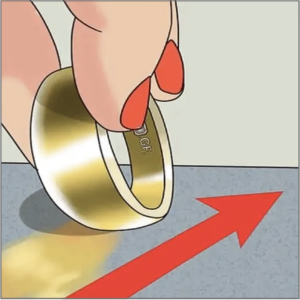
Step 2 - Acid Test
Apply a large drop or line of acid across the scratches. Repeat for each karat acid bottle and do not let them intersect. Within 30 seconds you will see results. (yellow:10K, green:14K, red:18K)
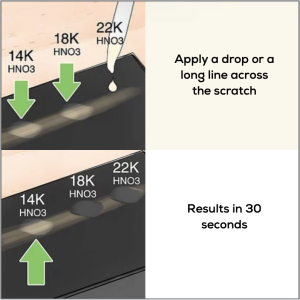
Step 3 - Reading Results:
- Positive: If the acid recognizes the karat it will enhance the scratches to a shiny color.
- Negative: If the acid doesn’t recognize the karat it will discolor the scratches.
Cleaning up and Neutralizing: Sprinkle some baking soda on the testing stone and let it sit for 60 seconds then rinse off and store safely for future use.
AT LAST
Yes, is that simple, now you are able to quickly test the authenticity of your gold jewelry and effectively identify its gold karat. Making you an educated consumer.
Here at Manuela Mejia Jewelry, we are proud of our labor of love which thrives on quality, craftsmanship, and the highest standards.
SHARE THIS POST
“How to Identify Gold Karat”

